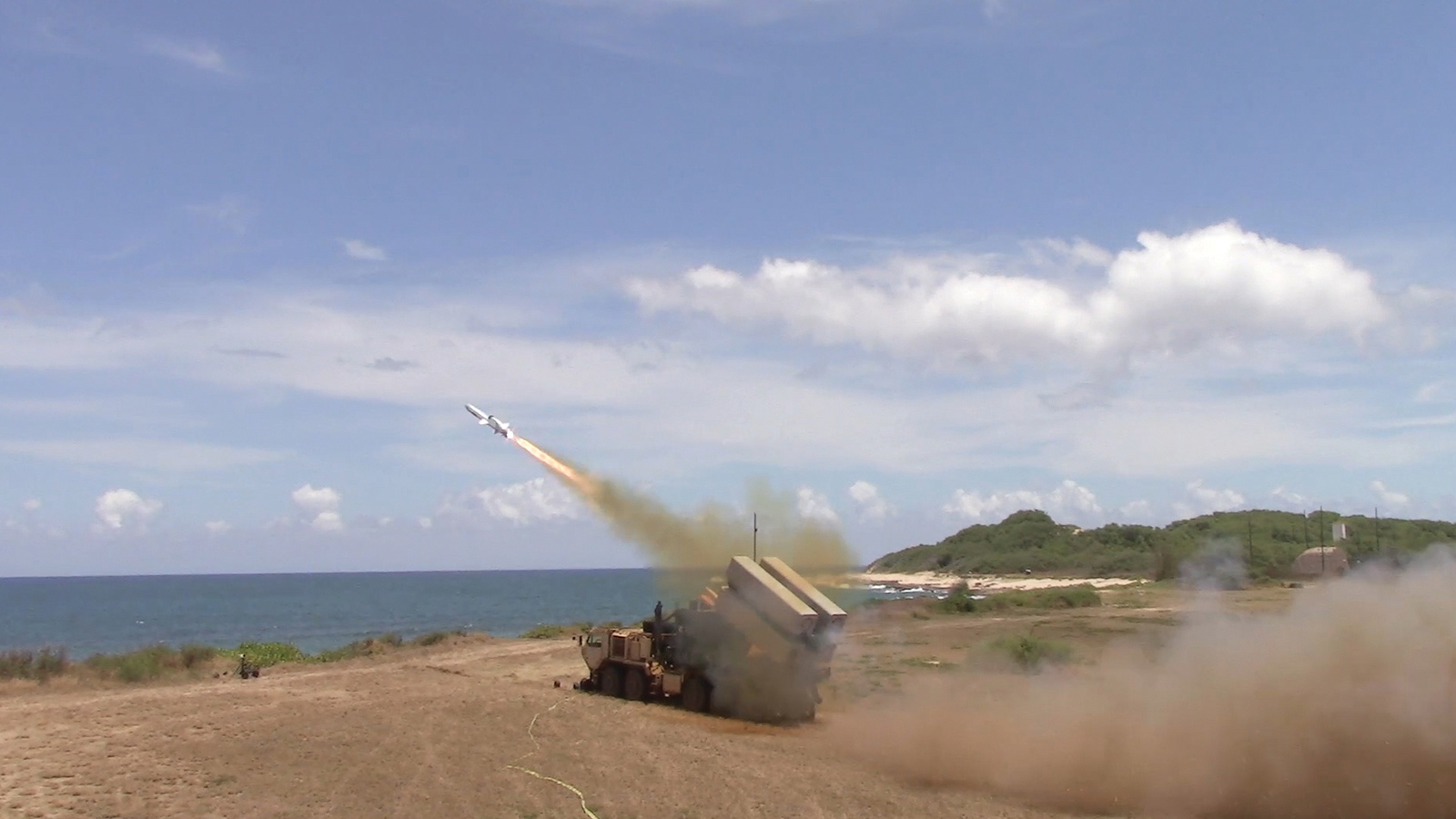Stay Up to Date
Submit your email address to receive the latest industry and Aerospace America news.
The Missile Systems Technical Committee focuses on technologies associated with the design, development, operations and utilization of strategic and tactical missile systems.
This year saw continued use of sophisticated missile technology in combat and new developments to address future threats.
In April, the U.S., Britain and France launched 105 cruise missiles against Syria after the repeated use of chemical weapons on civilian populations. The raid marked the combat debut of both Lockheed Martin’s Joint Air-to-Surface Standoff Missile, or JASSM, and the French Navy’s Missile de Croisière Navale land attack cruise missile developed by MBDA Inc. U.S. Air Force B-1 bombers fired 19 JASSMs while a French warship launched a trio of Missiles de Croisière Navale. The attacks struck facilities that manufacture and store chemical weapons for the Syrian regime. The U.S. Navy also participated by deploying 66 of Raytheon’s Tomahawk cruise missiles from a submarine and a pair of surface ships. Additional strikes were made by French and British Storm Shadow standoff cruise missiles launched from Rafale, Tornado and Typhoon fighter jets.
In June, the U.S. Army approved initial production for the Joint Air-to-Ground Missile after flight tests were completed. Developed by Lockheed Martin, JAGM adds a dual-mode semi-active laser and millimeter-wave radar seeker to the Hellfire II airframe. The upgrade provides fire-and-forget capability in day or night conditions against stationary or moving land and maritime targets despite bad weather or obscured conditions. JAGM is due to become operational with Army and Marine Corps attack helicopters and unmanned vehicles starting in 2019.
The U.S. Air Force’s Small Diameter Bomb II, also dubbed StormBreaker by manufacturer Raytheon, completed developmental tests in April and began operational testing in July. The Small Diameter Bomb II is a glide weapon with a unique tri-mode seeker that employs millimeter wave radar, uncooled imaging infrared and semi-active laser guidance. Combined with a two-way datalink for receiving in-flight updates, the bomb can detect, classify, track and engage long-range stationary or moving targets in adverse weather. Pilots dropped 44 weapons and used all modes of operation during the test program.
In July, the U.S. Navy announced the first guided flight test of the Evolved SeaSparrow Missile Block 2 ship self-defense weapon. Block 2 adds a new active radar seeker that allows the Raytheon missile to complete terminal engagements without a launch ship’s target illumination radars. This guided shot intercepted a BQM-74E drone and followed two controlled flight tests in 2017. Developed by a 12-nation consortium, the weapon is expected to enter production in 2019 and start fielding in 2020.
In anti-ship warfare technology, the U.S. Navy awarded a contract in June to Norway’s Kongsberg for integrating the Naval Strike Missile aboard littoral combat ships. The Naval Strike Missile and the Japanese Type 12 surface-to-surface missile also completed live-fire tests at the Rim of the Pacific exercise in Hawaii in July. The U.S. Army and Japan Ground Self-Defense Force showed how both missile types can be launched from the Palletized Load System to demonstrate a shore-based anti-ship capability. Along with several other weapons launched from ships, submarines and aircraft, both the Naval Strike Missile and Type 12 sank a retired warship during the exercise.
A focus of new development is hypersonic weapons capable of traveling at more than five times the speed of sound. Seeking to accelerate research in this field, the U.S. Air Force awarded contracts to Lockheed Martin in April for the Hypersonic Conventional Strike Weapon and in August for the Advanced Rapid Response Weapon. Both systems, expected to field in the early 2020s, are air-launched and boosted to high altitudes by rocket motors before gliding to their surface targets along a high-speed trajectory that makes intercept difficult.
Photo: A Naval Strike Missile launches from a U.S. Army Palletized Load System truck, hitting a decommissioned ship at the Rim of the Pacific exercise. Credit: U.S. Army
Stay Up to Date
Submit your email address to receive the latest industry and Aerospace America news.




